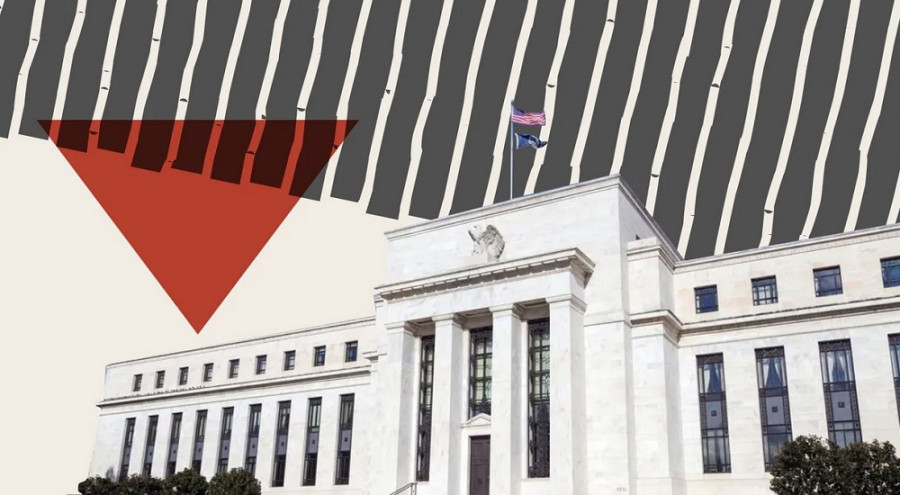The EUR/USD currency pair tested the 1.1020 resistance level on Wenesday, corresponding to the upper line of the Bollinger Bands indicator on the four-hour chart, the highest price since August 10. On one hand, it is a significant breakthrough for EUR/USD buyers: for almost two weeks, they besieged the resistance level of 1.0960 (the Bollinger Bands' middle line on the H4 timeframe) but could not consolidate above this target. On the other hand, traders did not stay within the 1.1020 level. After reaching 1.1020, the price rolled down again and ended up in the area of the 9th figure.

Nevertheless, despite the pullback, bullish sentiments persist for the pair. This is eloquently evidenced by the weekly chart of EUR/USD, reflecting an upward price trend (the pair has risen more than 500 points over six weeks). It is essential to emphasize that the pair is growing not only due to the weakening of the greenback but also to the strengthening of the euro, supported by the ECB.
However, the recent price surge was driven by a sharp decline in the U.S. Dollar index. The American currency came under pressure from 'dovish' comments from Federal Reserve representatives, who began discussing the conditions for reducing the interest rate.
It cannot be said that such a turn of events is entirely unexpected. After the publication of inflation growth data in October (recall that key reports were in the red zone), a softening of the Fed's rhetoric was an anticipated event. The difference lies in the fact that one of the prominent members of the 'hawkish wing,' Christopher Waller (a member of the Federal Reserve Board with a permanent voting right in the Committee), softened his rhetoric. He indicated that if the downward trend in key inflation indicators continues for several more months, the regulator may consider reducing the interest rate. According to him, in the conditions of a stable downward trend, there will be no reason for the Central Bank to insist that the rate should remain at the current, very high level. At the same time, he expressed confidence that the current rate level is sufficient to bring inflation down to the Fed's target of two percent.
Two conclusions can be drawn here. Firstly, the Federal Reserve is beginning to discuss the prospects of easing monetary policy. Not long ago, discussions on this topic were promptly halted: Fed representatives unanimously stated that it was too early to talk about it. Now, with Waller's light touch, the question of rate reduction has ceased to be 'marginal,' a priori unpromising for discussion. The topic of QE easing has become the subject of discussion. This is an important and somewhat pivotal moment. Secondly, Waller indicated that the Central Bank is satisfied with the current rate level because it is 'working' and producing the desired results. In other words, any changes in the rate are only possible in the direction of reduction. This is also a significant conclusion that naturally echoes the first one.
It is also worth noting that not only Waller voiced 'dovish' theses but also some of his colleagues, particularly the head of the Chicago Fed, Austan Goolsbee. Discussing the prospects of tightening/easing monetary policy, he resorted to an allegory, comparing monetary policy to cooking a turkey: in both cases, 'the main thing is not to overdo it.' He expressed concerns that the interest rate would remain at the current level 'too long.' And although Goolsbee did not provide any specific timeframes, he suggested that he might support a rate cut in the first half of next year.
The market reacted to such rhetoric accordingly. According to the CME FedWatch Tool, the probability of a rate hike in December/January is 0%. Meanwhile, the probability of a 25-point rate cut after the May meeting has risen to 51%.
In such conditions, fundamentally, one should approach the corrective pullbacks of EUR/USD with special caution, especially in anticipation of the publication of data on the growth of the core PCE index. As is known, this is one of the key inflation indicators closely monitored by Federal Reserve members. According to forecasts, the core personal consumption expenditures index in October will decrease to 3.5%. This is the minimum value of the indicator since September 2021. Even if the index reaches the forecast level (not to mention the 'red zone'), market discussions about the Fed resorting to a rate cut in the first half of 2024 will intensify. Such an information background will exert significant pressure on the U.S. dollar.
From a technical point of view, the EUR/USD pair on the daily chart is positioned between the middle and upper lines of the Bollinger Bands indicator, as well as above all lines of the Ichimoku indicator (including the Kumo cloud). The support level is located at the 1.0920 mark, which corresponds to the Tenkan-sen line. Price pullbacks are advisable to use for opening long positions: the main target is still 1.1020 (the upper line of the Bollinger Bands on the H4 timeframe).
The material has been provided by InstaForex Company - www.instaforex.comfrom Forex analysis review https://ift.tt/vbdhgHo
via IFTTT
